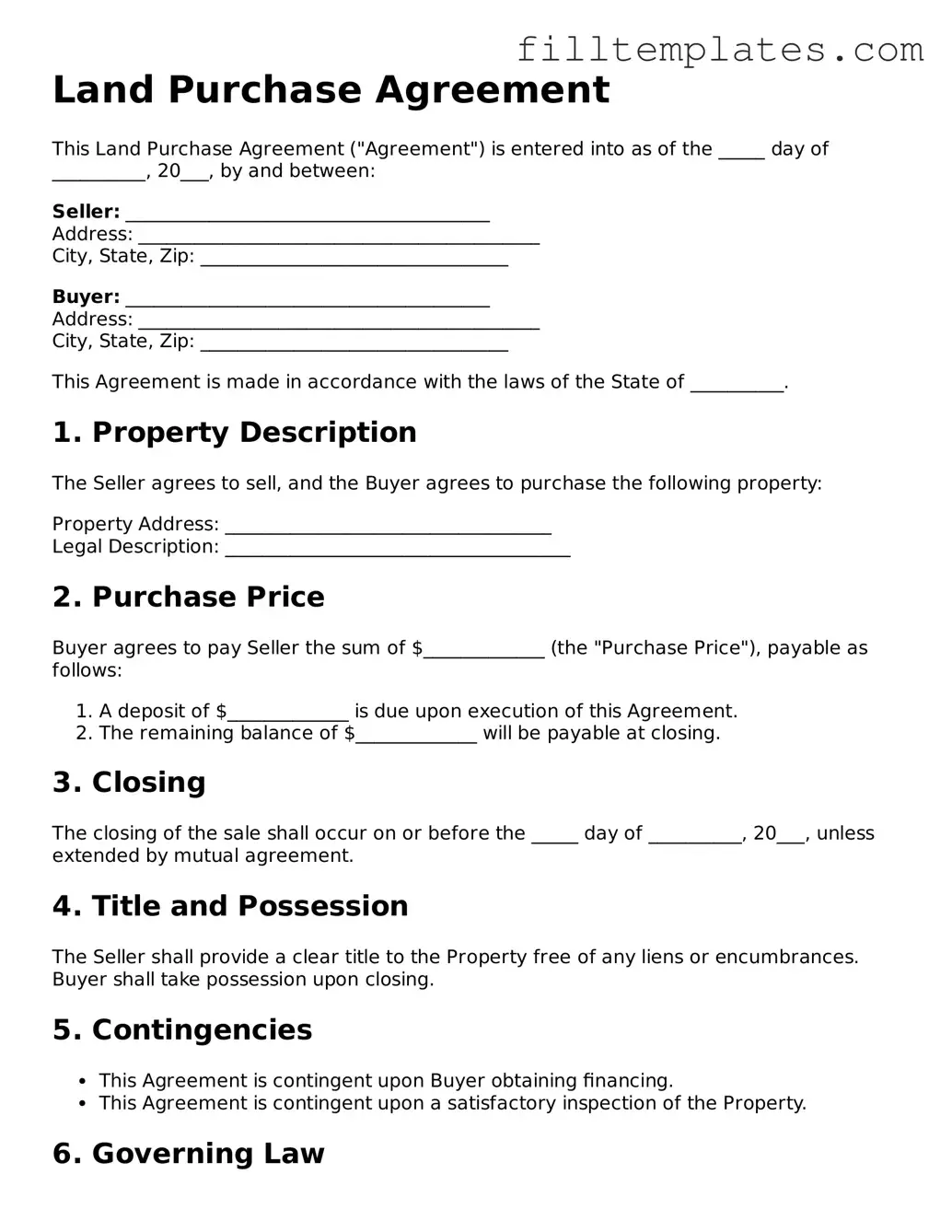Land Purchase Agreement
This Land Purchase Agreement ("Agreement") is entered into as of the _____ day of __________, 20___, by and between:
Seller: _______________________________________
Address: ___________________________________________
City, State, Zip: _________________________________
Buyer: _______________________________________
Address: ___________________________________________
City, State, Zip: _________________________________
This Agreement is made in accordance with the laws of the State of __________.
1. Property Description
The Seller agrees to sell, and the Buyer agrees to purchase the following property:
Property Address: ___________________________________
Legal Description: _____________________________________
2. Purchase Price
Buyer agrees to pay Seller the sum of $_____________ (the "Purchase Price"), payable as follows:
- A deposit of $_____________ is due upon execution of this Agreement.
- The remaining balance of $_____________ will be payable at closing.
3. Closing
The closing of the sale shall occur on or before the _____ day of __________, 20___, unless extended by mutual agreement.
4. Title and Possession
The Seller shall provide a clear title to the Property free of any liens or encumbrances. Buyer shall take possession upon closing.
5. Contingencies
- This Agreement is contingent upon Buyer obtaining financing.
- This Agreement is contingent upon a satisfactory inspection of the Property.
6. Governing Law
This Agreement shall be governed by the laws of the State of __________.
7. Signatures
IN WITNESS WHEREOF, the parties have executed this Land Purchase Agreement as of the day and year first above written.
Seller's Signature: ___________________________ Date: _______________
Buyer's Signature: ___________________________ Date: _______________
